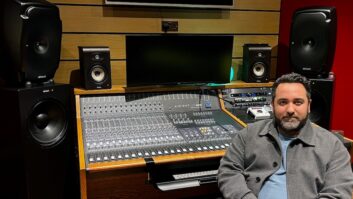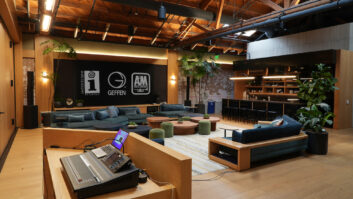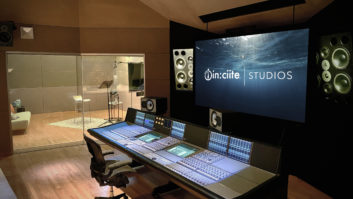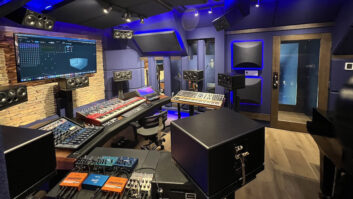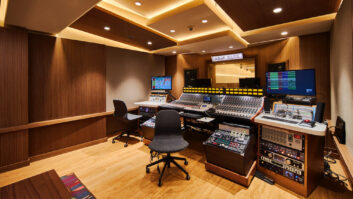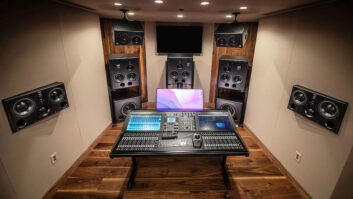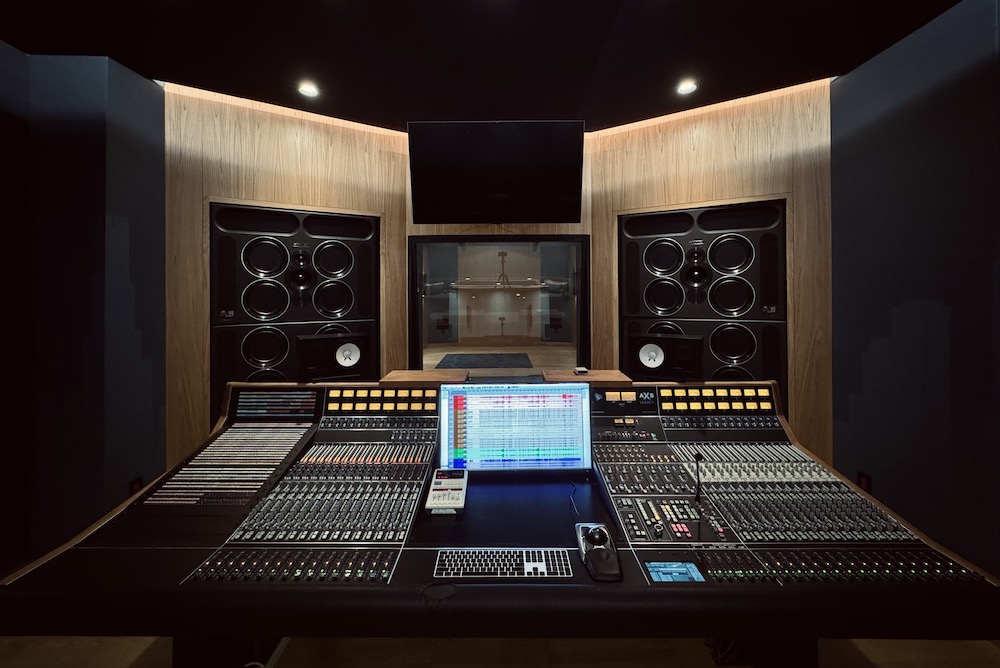
Santa Monica, CA (March 18, 2024)—“Content is King,” Microsoft co-founder Bill Gates famously wrote in 1996. He was referring to the economic opportunities of the Internet at the time, using the word “content” as a catch-all to cover the multitude of media capable of delivering entertainment and information. Gates got it right, of course—28 years later, we spend hours online every day consuming music, video and the printed word, and companies on the web have prospered as a result.
These days, an enterprise such as Universal Music Group, one of the Big Three record label groups and the largest music rights holder in the world, is as concerned with content in general almost as much as the company’s more singular focus: music. UMG has a presence in more than 60 countries and operates studios in a good number of them, but those facilities offer more than just music production.
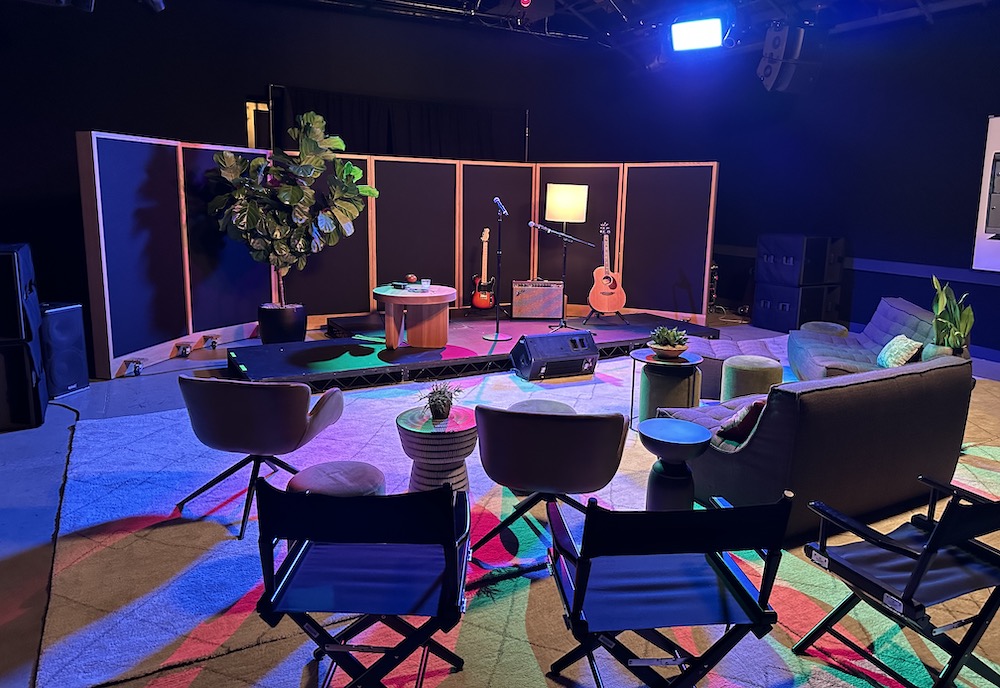
Take 21fifteen Studios in Santa Monica, Calif., as an example. Part of a four-building campus expansion completed just over four years ago, across the street from UMG’s operational headquarters (corporate HQ is in the Netherlands) and across an alley from the former Interscope facilities, 21fifteen Studios houses five music recording studios, a handful of writing and production suites, a couple of video bays, and a large, two-story room known as the Stage, a versatile, tech-forward, creative space—with a lighting truss, live sound console and a 13.1.10 immersive playback system.
A PLACE TO CREATE
“The Stage is a nickname that has developed over time,” explains Pat Kraus, senior vice president, Recording Studios and Archive Management, Universal Music Group, noting that the name derives more from the space’s similarity to a movie soundstage than to a live performance area, and it has so far served as a kind of sandbox for artists to play in. “We view it as a black box that allows us to do pretty much anything that we need to do to support the creative vision that somebody might have.”
‘Mix LA: Immersive Music Production’ Is a Hit!
Overall, Kraus says, UMG’s vision for its studio facilities worldwide is to provide similar creative spaces for its artist community and the company’s labels. There are similar audio-video-performance spaces, though in slightly different forms, in Nashville, and at Republic Records in New York City. UMG also recently filed plans for a four-acre-plus, multi-building, mixed-use campus in Nashville’s Berry Hill neighborhood that will include similar black-box spaces, in addition to recording studios, scoring stages and offices, as well as retail, restaurant and other facilities.

Meanwhile, the core focus of UMG’s recording studios—music production—has most definitely evolved, according to Roey Hershkovitz, VP, Sound and Picture, UMG Digital Operations. “All of our studios, and certainly our live rooms, have become performance areas. Video capture as part of these performances has become such a natural part of any live room in any number of our studios. We continue to find more and more ways to allow for video capture of performances more seamlessly within our spaces. And we’re continuing to focus on multi-camera live streaming.”

The Stage made its debut with a showcase performance by Marsha Ambrosius, an artist on Dr. Dre’s Aftermath imprint. “Everybody made sure that we showed off our best selves, dialing in the P.A.—and we got the thumbs-up from Dre,” Hershkovitz recalls. Almost the entire back wall of the Stage can be folded open to extend the footprint into 21fifteen’s central lounge. “We had nearly 200 people that day. It was just a beautiful, vibey, cocktail lounge setting, with a stage in front for Marsha. It was loud and it was awesome.”
“Shoutout to our contractors and our facilities people inside the company,” Kraus adds, “because we put that place together during the pandemic. And a shoutout to the incredible staff engineers. They get in the weeds when they tune the room, and it always sounds fantastic.”
When Mario de Arce, VP, Studio Technology, arrived at UMG about five years ago, after stints with Focusrite, Avid and Sony Music Studios in Manhattan, one of his first jobs was to design 21fifteen Studios’ technical infrastructure, which includes a Dante network backbone. There are multimode and single-mode fiber and Cat 6 patchbays in the main machine room, he explains: “Then, all the fiber runs to the machine rooms of each room, where it becomes copper through a switch. The whole facility is connected, and you can send whatever signal you want wherever you want it to go.”
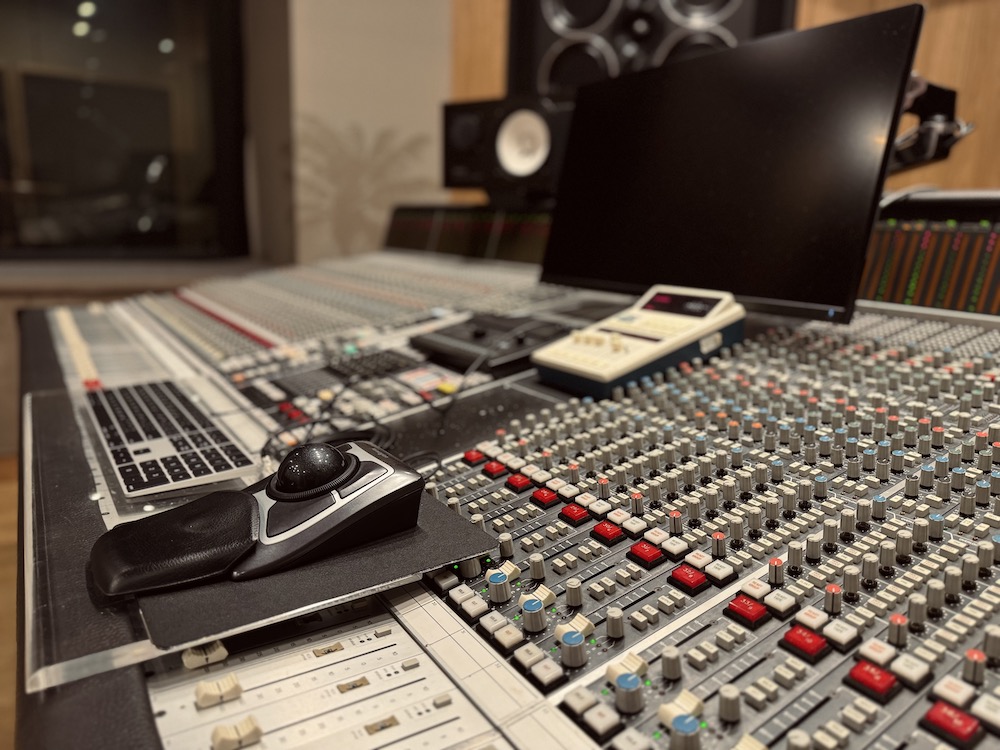
UMG artists keep 21fifteen’s recording studios constantly humming. The largest, Studio One, features an API AXS Legacy console and a large tracking room. An SSL 6000 E Series previously owned by Dr. Dre occupies Studio Two, while Studios Three, Four and Five feature new SSL Origin desks; all four have attached live rooms. All five control rooms are equipped with PMC monitors.
